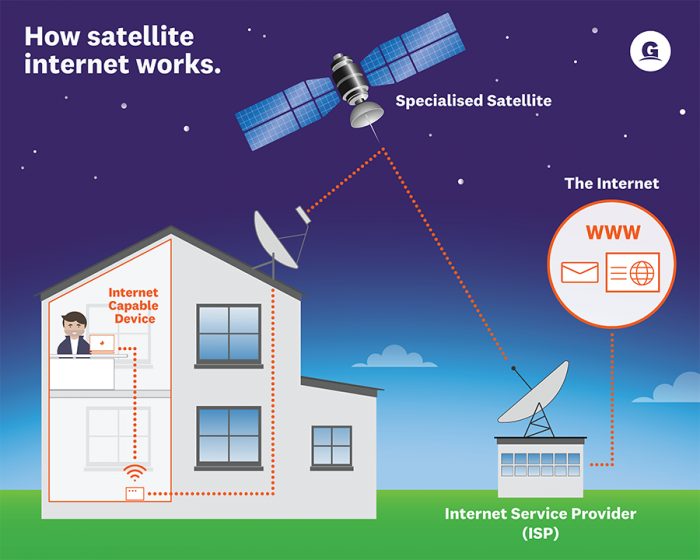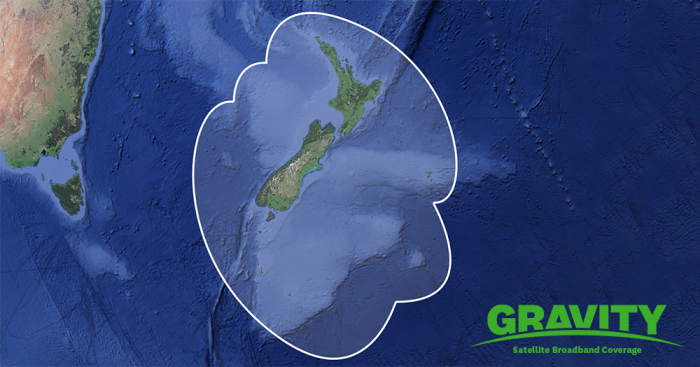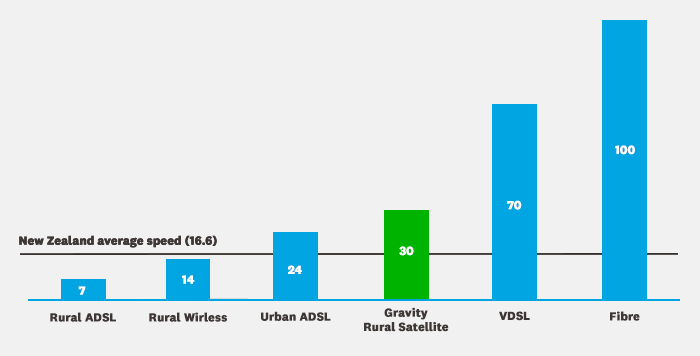
How does Satellite internet work?
Satellite internet allows you to connect your chosen devices (e.g. computer) to the internet. Your computer sends a signal to your router and then to your modem, which goes to up to a specialised internet satellite dish on your roof. The satellite dish sends the signal to an orbiting satellite in space and then to your internet provider (ISP). The provider sends a signal back through the satellite to your dish, and back to your computer at home. This connection type is 100% wireless to your house, so you don’t need copper lines or phone lines for this to work.
Simply put, satellite internet is a viable connection type for getting internet to your home, farm or business.





